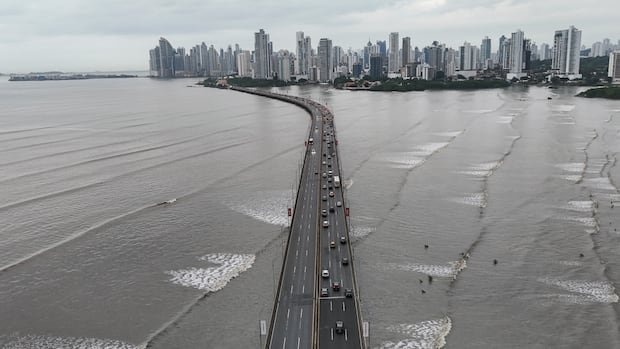On Tuesday, a severe 8.8 magnitude earthquake shook the region near Russia’s Kamchatka Peninsula, prompting tsunami alerts worldwide. From Hawaii to Japan, the B.C. coast to Chile and Australia, coastal residents were cautioned about potential high water levels.
The catastrophic 2004 Boxing Day tsunami, triggered by a 9.1 magnitude quake off Sumatra, Indonesia, claimed over 280,000 lives and displaced more than a million people in South Asia and East Africa. Another devastating event was the Tohoku earthquake and tsunami in 2011, which led to the closure of Japan’s Fukushima nuclear plant and caused over 15,000 fatalities.
Tsunamis, a series of waves generated by ocean water displacement, can vary in height from centimeters to tens of meters, engulfing structures and lives. These waves can traverse vast ocean basins, as seen with the recent Kamchatka earthquake that affected regions as distant as New Zealand.
Tsunamis are often linked to earthquakes, accounting for 80% of occurrences, but can also result from underwater and above-water landslides or rare atmospheric changes known as meteotsunamis. Underwater landslides triggered by earthquakes can propagate tsunamis by displacing water over extensive distances.
While major tsunamis like the Sumatra and Tohoku events are infrequent, occurring once every couple of hundred to a thousand years at a specific location, dangerous tsunamis occur approximately twice a year globally. Larger tsunamis causing significant damage or fatalities over 1,000 kilometers away happen roughly twice a decade.
Canada faces tsunami risks, especially along the B.C. coast due to the Cascadia Subduction Zone, known for potential megathrust earthquakes. The zone, extending from northern Vancouver Island to northern California, poses a threat of a magnitude nine or higher earthquake, potentially generating massive tsunamis.
East coast regions, although less seismically active than the Pacific’s “Ring of Fire,” still face tsunami risks. In 1929, a 7.4 magnitude earthquake triggered a tsunami in Nova Scotia and Newfoundland, emphasizing the need for robust warning systems and evacuation preparedness.
Preventing tsunamis is impossible, underlining the importance of effective early warning systems and evacuation protocols to safeguard lives. The recent earthquake and tsunami event underscored the critical role of timely warnings and evacuation readiness in mitigating disaster impacts.

